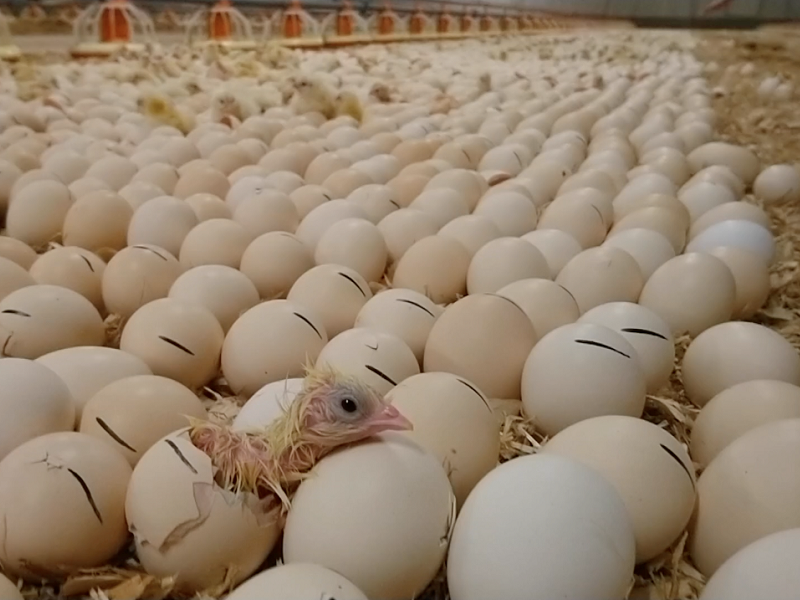Balancing consumer demands for higher animal welfare with lower emissions, and greater productivity with reduced inputs are very real problems for pig and poultry producers. But new research and technology could provide some of the answers, as visitors to the online Pig & Poultry Forums on 12 May discovered.
Although the poultry meat, egg and pig sectors each face individual challenges, finding this balance between competing demands was a common theme throughout the 21 presentations delivered in a full day of forums.
“This is the most seismic time of change for British farming in generations,” said Sophie Throup, head of agriculture, fisheries and sustainable sourcing at Morrisons. Consumer demands are changing, so it’s all about finding the right balance and giving consumers a choice.
While it might be easy to find improvements in one area – like emissions – that will interact with other areas – like accessibility of food for consumers, explained David Neilson, general manager of chickens at Avara Foods. “Does improving welfare – having free-range, slower grown birds – come at the cost of the environment?”
Managing performance
It’s a similar story in the pig sector – but making small tweaks to management can make a big difference to performance. “Over the past 10 years litter size has increased by 0.3 piglets,” said Dr Steven Jagger, pig nutritionist at ABN. As a result, birth weights have decreased and early mortality has risen.
But through more targeted gilt and sow nutrition, producers can have a massive impact on piglet survival and subsequent fertility, explained Chris Opschoor, feed group manager at Topigs Norsvin.
“If a gilt loses more than 12% of her bodyweight during lactation she will have 2.2 fewer piglets born alive in the next litter. This is low hanging fruit – if we’re able to manage this it will have a big positive impact.”
There are also some ground-breaking innovations which are improving performance while reducing farming’s carbon footprint. In the pig sector, this is taking the form of treated straw bedding, which reduces emissions and improves animal welfare.
By applying Xaletto, a stonemeal additive, to the straw it evaporates 100% of water and urine, leaving a solid, nutrient rich manure for use on farmland or in biogas plants.
According to Daniel Holling at Big Dutchman, provided the house has the right ventilation and pigs are fed a good quality ration, pigs will produce just 25kg of dung in their lifetime compared to 103kg on a slatted system. “And it produces 20% less ammonia than indoor deep straw systems.”
New innovations
In the poultry sector, the big innovation of the day is on-farm hatching, with many speakers singing its praises. By delivering ready-to-hatch eggs to the poultry farm, newborn chicks have immediate access to food, water and light, without the stress of being handled and transported from the hatchery, explained Erik Hoeven, general manager at Nestborn.
As a result, seven-day weights are higher, mortality is lower, and intestinal health is improved, leading to better litter quality and foot pad health.
Tom Wornham has produced four batches of on-farm hatched broilers at his farm in Hertfordshire, and is delighted with the results. “We love it, and I’m adamant that the birds are much happier.”
Growth rates have improved, so the birds finish one day quicker, resulting in huge feed savings. “It’s also a very public-facing, calm environment – even teenage vegetarians like watching them hatch.”
Public perception was another common theme across the sectors, with greater transparency – backed up by data – likely to help in this area. But getting consumers to pay for the higher welfare, carbon neutral systems that they demand is a challenge.
“Integrity has never been more important, and scrutiny has never been greater,” said Tom Willings, chief operating officer at Stonegate. Generation Z is all about transparency and environmental credentials – so with the spotlight firmly on Net Zero aspirations, conversations soon turned to both the pig and poultry sectors’ greatest contributor to emissions: Feed.
Alternative protein
“Whatever protein source we use will end up more expensive than soya,” said Martin Humphrey at Humphrey Feeds. “But the environmental cost is another matter.”
Insect protein, sunflowers, worms, algae and lupins all offer possible alternatives, but the most sensible and sustainable option is meat and bonemeal, as it provides so much of the protein and nutrients required, and is just a waste product. “If we could use 7.3% meat and bonemeal in poultry rations we could reduce soya to 8% of the diet – that would be a lot more sustainable.”
As post-Brexit legislation continues to change and the economy emerges from Covid-19, there will plenty of challenges – and opportunities ahead, said event organiser Alice Bell.
“Keeping abreast of changing market conditions, new technology, and the latest advice will be essential. I hope that by bringing the industry together we’ve shared ideas and helped farmers to build their businesses for the future, and look forward to welcoming everyone back to the physical Pig & Poultry Fair in May 2022.”
- To watch the forum recordings, visit www.pigandpoultry.org.uk



